Pottery offers you three calming techniques to ease anxiety. Mindful coil building involves stacking clay coils, focusing on the rhythm and sensation to quiet your mind. Therapeutic wheel throwing centers both you and the clay, fostering a grounding connection as you shape it on a potter's wheel. Soothing hand-pinching lets you create simple vessels by cupping and shaping clay with your thumbs, emphasizing creativity and comfort. Each method encourages mindfulness, promotes a flow state, and provides a tactile respite from daily stressors. These techniques not only produce unique creations but also offer a path to inner peace and relaxation.
Mindful Coil Building

In light of its meditative qualities, mindful coil building is an excellent pottery technique for anxiety relief. This method involves slowly forming long, rope-like coils of clay and stacking them to create a vessel. As you roll the clay between your palms, focus on the sensation and rhythm of the motion. This repetitive action can help quiet your mind and reduce anxious thoughts.
Begin by centering yourself and taking a few deep breaths. Roll out your first coil, paying attention to its texture and consistency. As you stack each coil, concentrate on the process of joining them together. Use gentle pressure to blend the coils, creating a smooth surface. This careful attention to detail can help ground you in the present moment.
As your vessel takes shape, observe how each coil contributes to the overall form. Don't worry about perfection; embrace any irregularities as unique features of your creation.
The slow, deliberate nature of coil building encourages patience and mindfulness, allowing you to let go of stress and anxiety as you work. Remember to breathe deeply and maintain a relaxed posture throughout the process.
Therapeutic Wheel Throwing
While coil building offers a meditative experience, wheel throwing provides a dynamic approach to anxiety relief. As you sit at the potter's wheel, you'll find your focus shifting entirely to the clay spinning before you. The rhythmic motion of the wheel and the tactile sensation of shaping the clay can help quiet your anxious thoughts.
To get started with therapeutic wheel throwing, you'll need:
- A potter's wheel
- Clay suitable for throwing
- Basic pottery tools (wire cutter, sponge, ribs)
- A calm, dedicated space
As you center the clay, you're also centering yourself. The process of throwing requires your full attention, leaving little room for worry. You'll feel the clay respond to your touch, molding and shaping under your hands. This physical connection can ground you in the present moment, alleviating anxiety.
Wheel throwing also offers a sense of accomplishment. As you improve your skills, you'll create functional pieces that serve as tangible reminders of your ability to overcome challenges.
The repetitive nature of throwing multiple pieces can induce a flow state, further reducing stress and anxiety. Remember, the goal isn't perfection but the therapeutic process itself.
Soothing Hand-Pinching Techniques
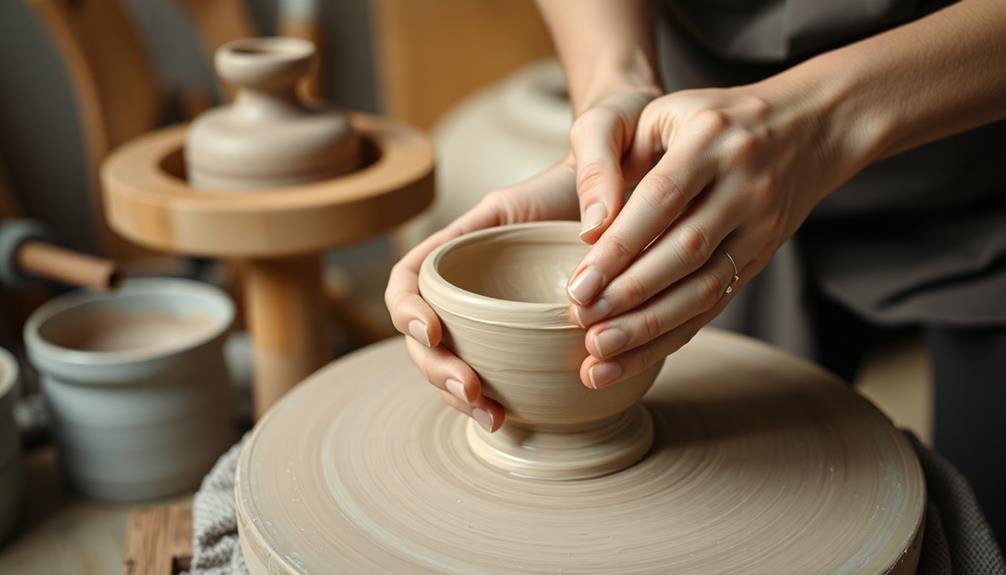
Hand-pinching techniques offer a gentle, accessible entry point into pottery for those seeking anxiety relief. You don't need any special equipment or prior experience to get started.
Begin by taking a small ball of clay and cupping it in your hands. As you work, focus on the sensation of the cool, damp clay against your skin.
Using your thumbs, slowly press into the center of the clay ball, creating a shallow depression. Gradually pinch and rotate the clay, thinning the walls and shaping it into a simple vessel. Pay attention to the clay's texture and malleability as you work. This mindful process can help ground you in the present moment, easing anxious thoughts.
Experiment with different shapes and sizes, allowing your creativity to flow freely. You might find comfort in creating small, delicate pinch pots or larger, more substantial pieces.
Don't worry about perfection; embrace the organic, handmade quality of your creations. As you become more comfortable with the technique, try adding subtle textures or patterns using your fingertips or simple tools.
The repetitive, tactile nature of hand-pinching can be deeply soothing, providing a calming respite from daily stressors.
Frequently Asked Questions
How Long Does It Take to See Anxiety-Reducing Benefits From Pottery?
You'll likely experience immediate relaxation during pottery sessions. However, it usually takes several weeks of regular practice to see lasting anxiety-reducing benefits. Consistency is key, so try to engage in pottery at least once a week.
Can Pottery Help With Other Mental Health Conditions Besides Anxiety?
Yes, pottery can help with various mental health conditions. You'll find it beneficial for depression, PTSD, and stress reduction. It's also great for improving focus, boosting self-esteem, and enhancing mindfulness. Give it a try to experience these benefits yourself.
What Are the Best Types of Clay for Beginners?
You'll find earthenware clay ideal for beginners. It's soft, pliable, and easy to work with. Stoneware's another great option, offering durability and versatility. Air-dry clay's perfect if you don't have access to a kiln.
Is Pottery Suitable for Children With Anxiety Disorders?
Yes, pottery can be suitable for children with anxiety disorders. You'll find it's a tactile, creative activity that can help them focus and relax. It's also great for building confidence and self-expression. Always supervise and choose age-appropriate techniques.
How Can I Set up an At-Home Pottery Studio for Anxiety Relief?
You'll need a dedicated space, pottery wheel, clay, tools, and a kiln. Start small with basic equipment. Create a peaceful environment with good lighting and ventilation. Don't forget a comfortable chair and storage for your supplies.
In Summary
You've now explored three powerful pottery techniques to ease your anxiety. Whether you're coiling, throwing, or pinching, remember that the process is just as important as the final product. Don't worry about perfection; focus on the soothing repetition and tactile sensations. As you practice these methods, you'll likely find your stress melting away. So, grab some clay, take a deep breath, and let your hands guide you to a calmer state of mind.
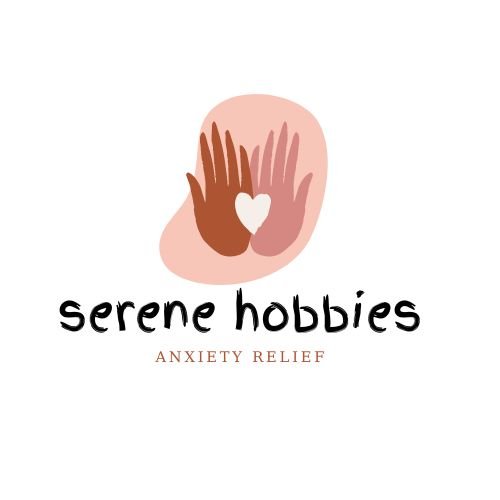
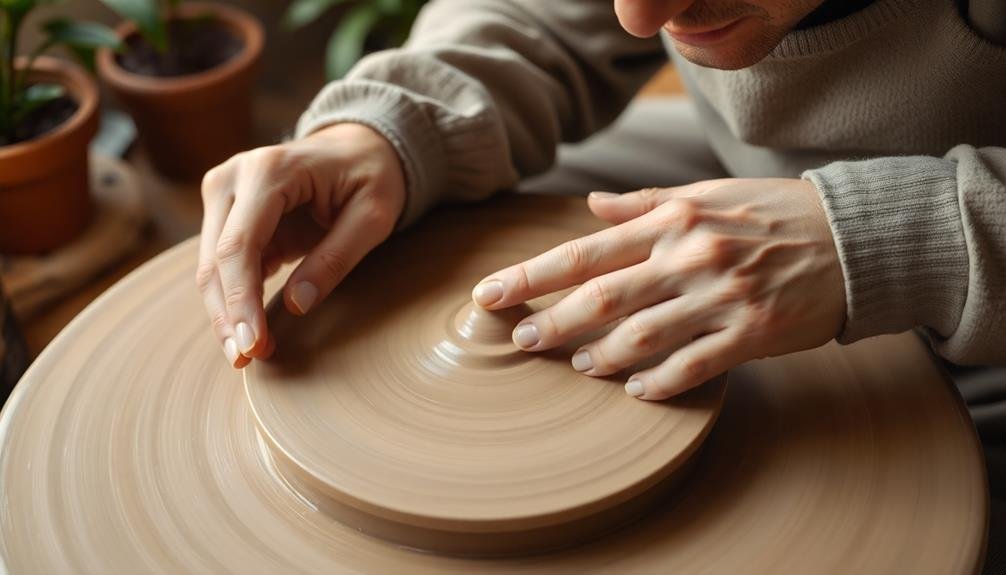

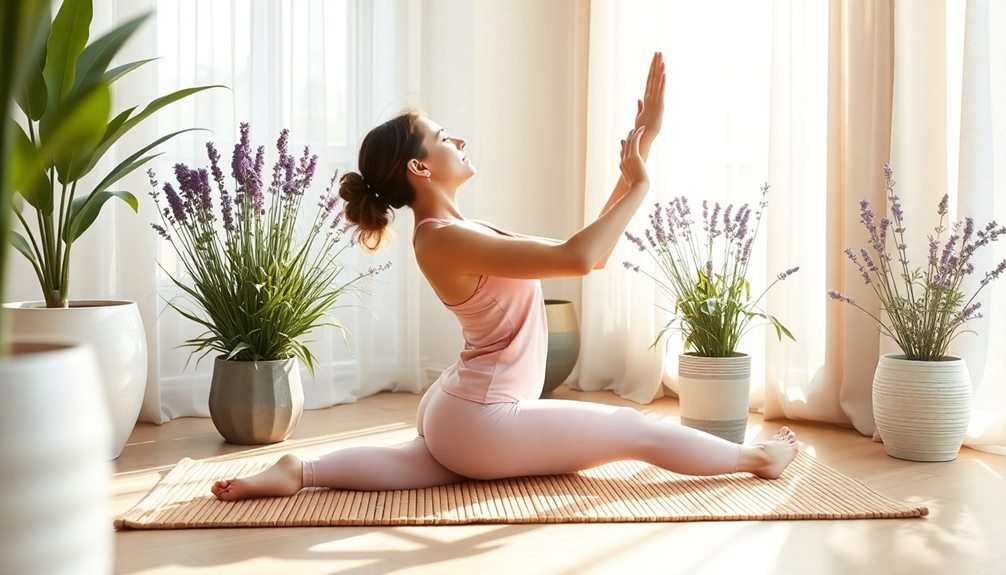
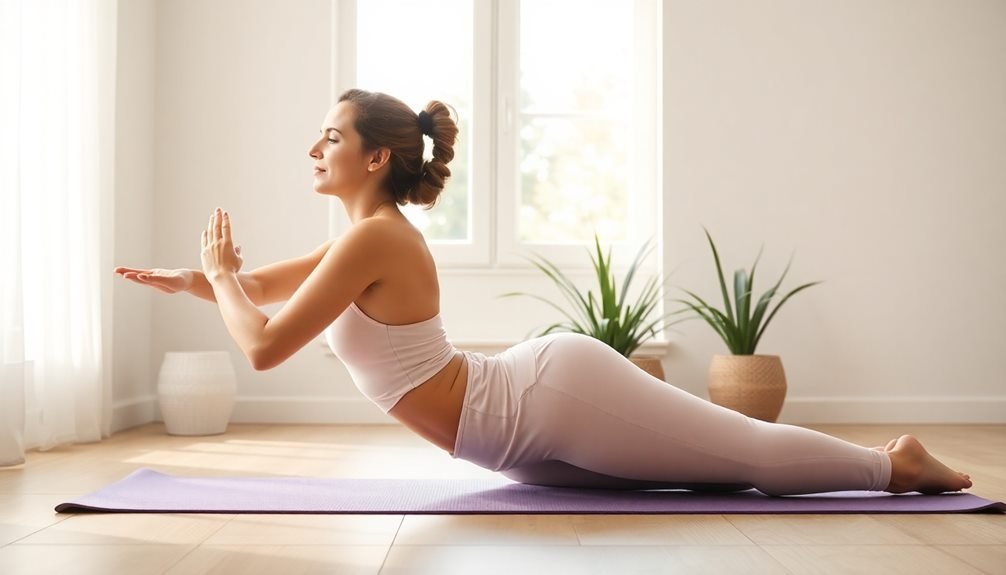
Leave a Reply